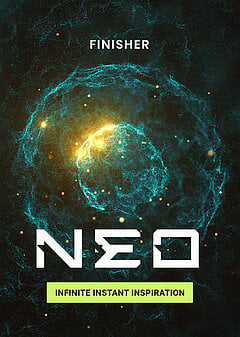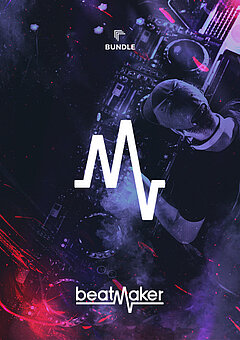The Ultimate Guide to Synthwave
How the sounds of 80s new wave and modern day EDM merge into a cyberpunk masterpiece that transcends any decade.
APRIL 25TH, 2020
Everything About The Future Genre From The Past
What images come to mind when you hear the words sci-fi, 80s, and cyberpunk? Dark city alleyways, neon lights, and perhaps wingless flying cars speeding into the night? Does the mood feel dark, pensive, and foreboding? Once you have a clear set of images in your mind, think about what the perfect soundtrack for them would be. If you’ve watched movies like Blade Runner or Total Recall, you probably have a clear idea… Reviving that collection of feelings in contemporary electronic music is the core tenant of synthwave.
What is synthwave?
If you’ve ever wondered what it would sound like to blend the iconic synths and percussion from the 1980s with the production quality of highly polished EDM (electronic dance music), you probably have a rough idea of this genre’s unique sound. Virtual drums are often used in lieu of classic drum machines, but in many cases producers still prefer to use analog tools and beat samples. Modern virtual drum software, combined with the analog sounds of more than 30 years ago, makes for a cross of styles and decades that presents an opportunity for producers to look back while still pushing the music industry forward.
Musical references and influences
Popular synthwave tracks and producers
The movie Drive is one of the most popular examples of the genre in film, as well as Tron: Legacy. Modern Hollywood films often use synthwave in soundtracks for sci-fi movies that have strong 80s influences, as it’s the perfect bridge between retro aesthetic and a futuristic sound that simply wasn’t possible to achieve when new wave music was emerging in decades past. The music of groups like Daft Punk (Tron: Legacy), Electric Youth, and Kavinsky (“Nightcall,” the theme song of Drive) hearkens back to electropop film soundtracks from the 1980s. Though synthwave emerged in the first decade of the 2000s and seemingly peaked around 2010/2011, it’s recently had a strong resurgence in film and the world of underground EDM.
How to create the synthwave sound
One of the most archetypal themes of synthwave is a 16th note repeated bass rhythm. This provides a strong anchor and can be achieved by using a sawtooth LFO (low-frequency oscillator) to modulate low pass filter cutoff. Many synthwave tracks fall under the category of 4 to the floor: the kick drum typically plays on every quarter note, and the snare triggers on beats 2 and 4. The sound of the kick can vary wildly, but it’s typically non-tonal (no pitch) and deep. The snares tend to have heavily gated reverb as was common in the 80s, but the body of the snare is much closer to modern-day EDM. UJAM’s new Beatmaker VICE is an excellent tool to quickly create a variety of retro beats perfect for the synthwave genre! A slightly wavering pitch is an integral part of the genre’s sound, which was present in a lot of 80s music. Between the use of magnetic tape and analog synths with physical wires and circuits, there’s a certain organic quality that’s difficult to replicate digitally. With time and a bit of playfulness, you’ll learn how to create synthwave by using some of the synths mentioned just above. This is particularly important to use on chord and melodic synths. One major distinction between synthwave and other varieties of EDM lies in production style: where most EDM tends to be heavily compressed and very bright, in synthwave the higher frequencies are often rolled off in favor of molding a more subdued timbre.
What are the most used analog and digital instruments in synthwave?
One of the most flexible audio plugins for creating chords in this genre is Serum (Sylenth and Massive are also quite effective), largely due to the ability to create continual and random pitch changes with the Chaos modulator. The Chaos modular provides a distinctive advantage over conventional LFOs in that it’s constantly changing; that unpredictability goes a long way to transforming the cold precision of digital synths into the often more expressive analog world. That being said, there are a wide variety of synthesizers that are quite effective, and new ones are emerging constantly. Even if you have access to some of the best VST instruments, a tool like RC-20 Retro Color is invaluable to give any audio tracks a retro, degraded and distinctly 80s feel. But sometimes, even the best vst plugin for synthwave doesn’t quite match up to the classic hardware synthesizers that gave birth to 80s electro pop and the original roots of the genre. In the analog realm, some of the most iconic 80s synth sounds came directly from the Roland Jupiter-8. When you hear punchy bass lines, chorus effects and huge-sounding leads and chords in an 80s song, there’s a decent chance you’re hearing this classic beauty. For a guide to recreating some iconic 80s synth sounds perfect for synthwave, here’s an excellent article from MusicTech. For creating the perfect synthwave beats preloaded with detailed percussion samples, check out UJAM’s new Beatmaker VICE. Especially if you’re just getting started with producing in this genre, VICE will help you with beat making that fits naturally into the genre, and is the best Beatmaker for adding powerful kicks and snares with minimal effort. If you want to know how to produce beats at home without expensive equipment, you can try it here. There are a plethora of tools to get you started with this highly niche and nuanced genre, but the most important thing, as always, is to listen to as much and as often as you possibly can. Between YouTube mixes, Spotify playlists and endless other sources, there’s no shortage of synthwave to listen to, dissect, and recreate! VICE is based on and inspired by this playlist.
If this is the kind of music you wanna create, VICE will make the beats for it.
About the Author
Harry Lodes is a copywriter, marketing consultant and content writer for audio and ecommerce brands. He lives in the Philadelphia area, releasing Eastern/Western hybrid EDM under the artist name KAIRI hearkening back to his roots in Berklee College of Music.
Stay up to date
Sign up and we’ll send you an e-mail with product news and helpful stuff every now and then. You may unsubscribe at any time.
Defy Limits
We develop software solutions that enable people to create, consume and interact with music.



